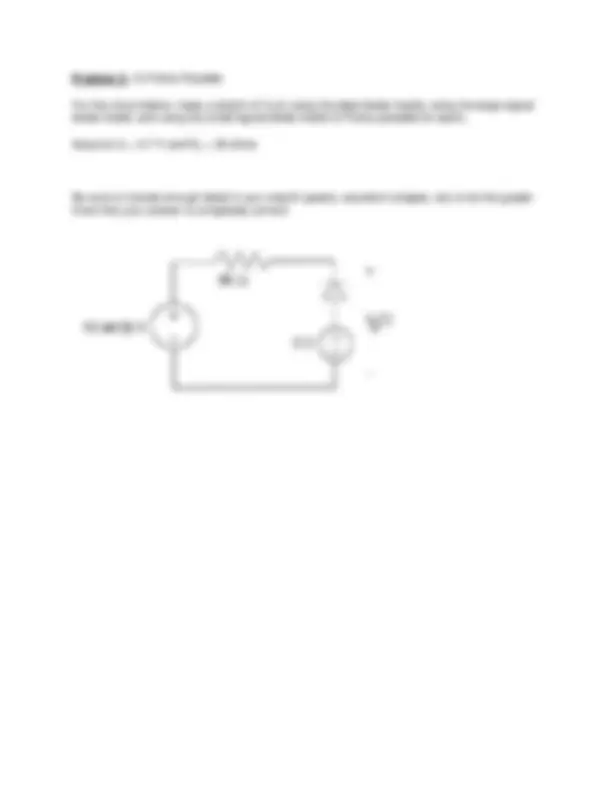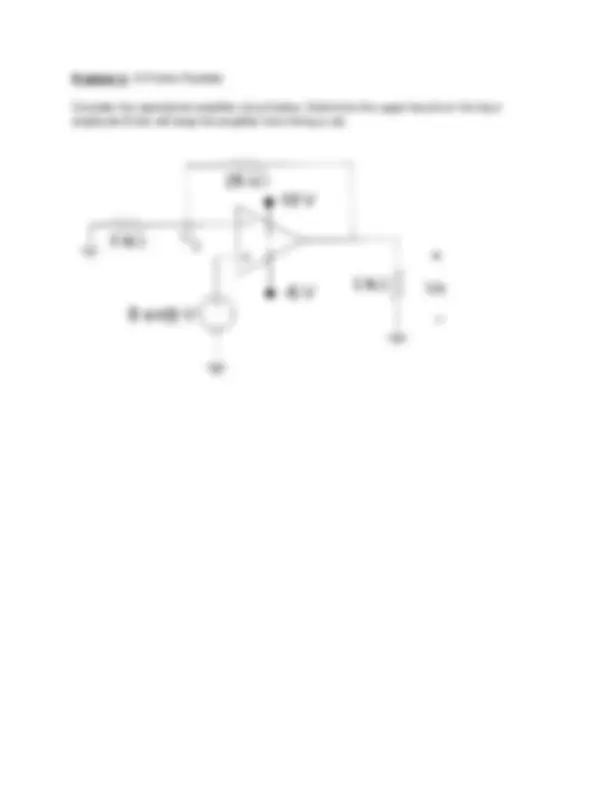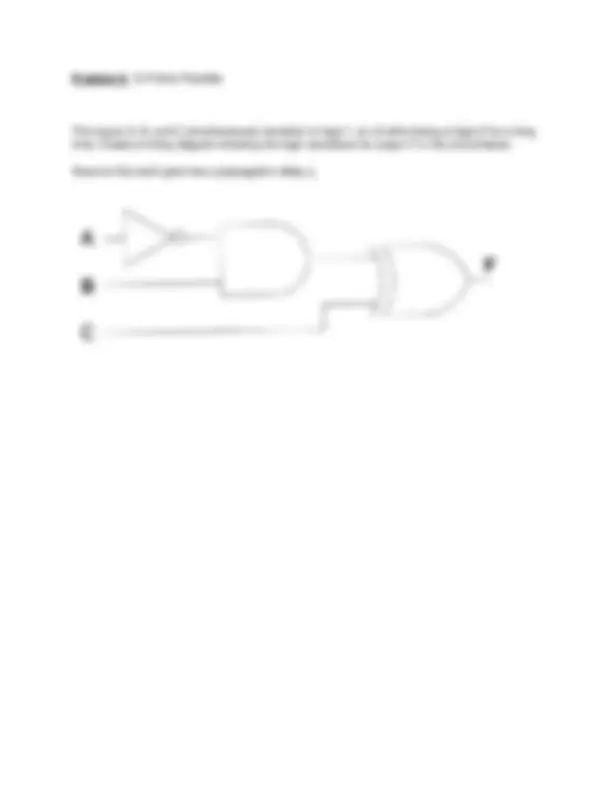








Study with the several resources on Docsity

Earn points by helping other students or get them with a premium plan


Prepare for your exams
Study with the several resources on Docsity

Earn points to download
Earn points by helping other students or get them with a premium plan
Community
Ask the community for help and clear up your study doubts
Discover the best universities in your country according to Docsity users
Free resources
Download our free guides on studying techniques, anxiety management strategies, and thesis advice from Docsity tutors
The questions and instructions for problem 1 to problem 7 from the spring 2003 ee40 midterm 2 electrical engineering exam. The problems cover topics such as diodes, operational amplifiers, boolean logic, and analog-to-digital converters. Students are required to answer questions related to the behavior of diodes under different biasing conditions, sketch voltage waveforms, determine the upper bound on input amplitude, design operational amplifier circuits, and write boolean functions using sum-of-products method. The document also includes an alternate problem for those who prefer a simpler 1-bit analog-to-digital converter design.
Typology: Exams
1 / 10

This page cannot be seen from the preview
Don't miss anything!







Problem 1: 15 Points Possible (1.5 Points for each question)
a) n-type material
b) p-type material
a) negatively charged
b) positively charged
c) neutrally charged (no charge)
a) reverse breakdown
b) forward bias
c) drift
d) diffusion
a) negative ions in the n-type material
b) positive ions in the n-type material
c) holes in the n-type material
d) free electrons in the n-type material
a) the potential drop across the p-n junction becomes too large for the electrons to cross
b) all the holes on the other side are filled
a) forward bias
b) reverse bias
c) open-circuit condition (diode left alone)
d) short-circuit condition (diode ends connected)
a) p-type material
b) n-type material
c) metal contacts
a) from n-type to p-type because the electrons' chemical attraction to holes overcomes the electric force keeping them from crossing
b) from p-type to n-type because the electrons' chemical attraction to holes overcomes the electric force keeping them from crossing
c) from n-type to p-type because the electromotive force created by the potential rise across the junction is stronger than the chemical bonds
d) from p-type to n-type because the electromotive force created by the potential rise across the junction is stronger than the chemical bonds
Problem 2: 15 Points Possible
For the circuit below, make a sketch of VO(t) using the ideal diode model, using the large-signal diode model, and using the small-signal diode model (5 Points possible for each).
Assume VF = 0.7 V and RD = 20 ohms
Be sure to include enough detail in your sketch (peaks, waveform shapes, etc) to let the grader know that your answer is completely correct!
Problem 3: 10 Points Possible
Consider the operational amplifier circuit below. Determine the upper bound on the input amplitude B that will keep the amplifier from hitting a rail.
Problem 5: 15 Points Possible + 2 Bonus Points Possible
a) Use the sum-of-products method to write a Boolean function for F in terms of A, B, and C. ( Points Possible)
b) Draw the circuit for your function from part a) using only inverters and (multiple-input) NAND gates. (5 Points Possible)
c) Simplify your function from part a) to use fewer gates and/or fewer inputs to each gate. Use any method you like. Any correct simplification will result in full credit. 2 Bonus Points will be awarded for the simplification that uses the fewest total number of logic gates. (5 Points + 2 Bonus Points Possible)
Problem 6: 15 Points Possible
The inputs A, B, and C simultaneously transition to logic 1 at t=0 after being at logic 0 for a long time. Create a timing diagram showing the logic transitions for output F in the circuit below.
Assume that each gate has a propagation delay tp.
Alternate Easier Problem 7 for 5 Points Possible (10 Points will be lost)
Design a 1-bit analog to digital converter.
Given Vin < 2 V, design a circuit that will compare Vin to 1 V.
Vout should be logic 1 (4 V) if Vin > 1 V, and Vout should be logic 0 (0 V) if Vin < 1 V.
Don't be concerned about the operation of the circuit for Vin very close to 1 V.